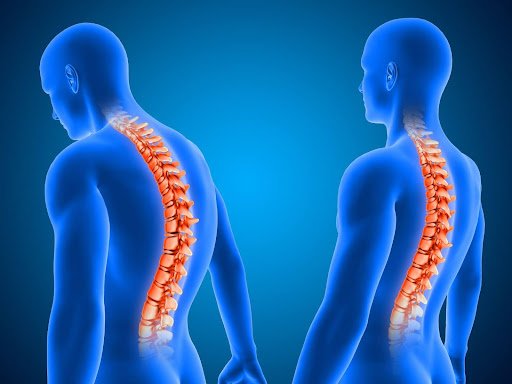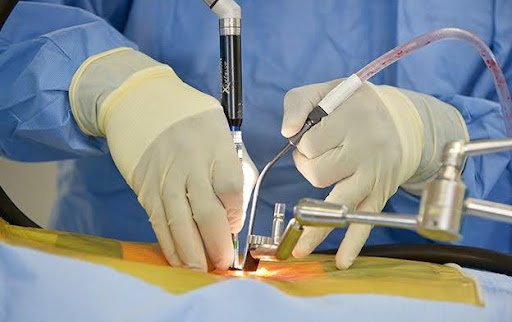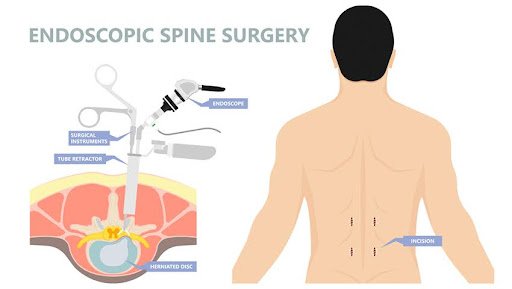Back pain is one of the most common reasons for doctor visits, affecting millions in India and across the world. While conservative approaches such as physiotherapy, medications, and lifestyle modifications can be effective, some cases require surgical intervention. Fortunately, advances in medical technology have introduced safer and more efficient alternatives to traditional open surgeries. One such advancement is Minimally Invasive Spine Surgery (MISS), a technique that offers patients quicker recovery, reduced pain, and minimal disruption to daily life.
This blog explores the fundamentals of MISS, the conditions it treats, benefits, common procedures, candidacy, and recovery expectations all tailored to educate individuals considering back pain solutions.

What is Minimally Invasive Spine Surgery?
Minimally Invasive Spine Surgery refers to surgical techniques performed through small incisions using specialised instruments, including endoscopes and microscopes. Unlike traditional spine surgery, which involves large incisions and extensive muscle dissection, MISS preserves healthy tissues and targets only the affected area.
These procedures are performed with high-definition visualisation, ensuring precision while reducing trauma to surrounding muscles, ligaments, and nerves.

How It Differs from Traditional Spine Surgery
In traditional spine surgery, surgeons typically make a large incision (5-6 inches or more), retract muscles, and manually remove bone or disc material. This approach, while effective, often results in:
- Greater blood loss
- Longer hospital stay
- Higher risk of infection
- Prolonged recovery period
MISS, on the other hand, involves:
- Small incisions (less than 2 cm)
- Use of tubular retractors and a surgical microscope
- Targeted removal or correction of the issue
- Often performed as a day-care or short-stay procedure.
Because it minimises soft tissue damage, patients experience less postoperative discomfort and quicker return to daily activities.
Conditions Treated with MISS
MISS can effectively treat several spinal conditions, including:
- Herniated or bulging discs
- Spinal stenosis (narrowing of the spinal canal)
- Degenerative disc disease
- Spondylolisthesis (slipped vertebra)
- Spinal fractures
- Spinal infections or tumours (in selected cases)
- Sciatica and chronic nerve root compression
It also applies to select cases requiring spinal fusion procedures for stabilising the spine.
Benefits of Minimally Invasive Spine Surgery
MISS offers significant advantages over conventional surgery, especially for patients seeking safer options with faster outcomes.
Smaller Incisions and Minimal Scarring
The hallmark of MISS is the use of tiny incisions. This results in:
- Minimal scarring
- Less trauma to the skin and muscle
- Reduced postoperative pain
It also lowers the risk of wound complications and infections.
Faster Recovery and Less Downtime
Because MISS preserves more of the body’s natural structure, patients benefit from:
- Shorter hospital stays (often discharged within 24-48 hours)
- Quicker return to work and normal activities
- Lower need for postoperative pain medications
For working professionals, this offers a practical solution to back pain without prolonged disruption to lifestyle.
Common Minimally Invasive Spine Procedures
Several specialised procedures fall under MISS, depending on the spinal issue being addressed.
Microdiscectomy
A microdiscectomy involves removing a portion of a herniated disc pressing on a nerve root. Using a microscope or endoscope, the surgeon accesses the disc through a small incision and relieves pressure on the nerve. It is commonly used for sciatica or lumbar disc herniation.
Laminotomy
A laminotomy removes a small section of the lamina (part of the vertebra) to relieve pressure on the spinal cord or nerve roots. Unlike a full laminectomy, which is more invasive, this approach preserves spinal stability.
Endoscopic Spine Surgery
This advanced form of MISS uses a high-definition camera (endoscope) to visualise and treat spinal problems through even smaller incisions. It is particularly useful for nerve decompression and disc removal procedures.

Who is a Candidate for MISS?
MISS is not suitable for every patient, but it is an excellent option for many individuals with chronic back or leg pain who haven’t responded to conservative treatment.
Evaluation Criteria
Ideal candidates for MISS include:
- Patients with localised spinal issues confirmed by MRI or CT scan
- Individuals with persistent symptoms such as radiating leg pain, numbness, or weakness
- Patients without severe spinal deformity or instability
The pain specialists at Alleviate Pain Clinic conduct a thorough clinical examination and diagnostic evaluation before recommending MISS.
Risks and Considerations
Although Minimally Invasive Spine Surgery is considered safer than open surgery, it still carries some risks, such as:
- Bleeding or infection
- Nerve injury
- Dural tear (rare)
- Incomplete symptom relief
- Need for further surgery.
Proper preoperative planning and choosing an experienced spine specialist greatly reduce these risks.
Potential Complications
Like any surgical procedure, potential complications can arise, including:
- Failed back surgery syndrome (rare)
- Scar tissue formation
- Adjacent segment disease in fusion procedures
However, these risks are significantly lower in minimally invasive procedures compared to traditional approaches.
Recovery and Rehabilitation
Recovery from MISS is typically smoother and quicker than open surgery.
Postoperative Expectations
Most patients can walk on the same day or the next. Depending on the procedure:
- A hospital stay may last from a few hours to 2 days.
- Return to work in 1–4 weeks.
- Physical therapy begins soon after surgery
For the initial recovery period, patients are encouraged to avoid heavy lifting and prolonged sitting. A gradual return to normal activity is part of the rehabilitation plan.
Conclusion
Minimally Invasive Spine Surgery represents a transformative leap in spinal care, offering a modern solution for those suffering from chronic back and leg pain. By leveraging advanced tools and precise techniques, MISS achieves excellent clinical outcomes while preserving natural anatomy and minimising recovery time.
At Alleviate Pain Clinic, our spine specialists are trained in delivering non-surgical and minimally invasive solutions tailored to each patient’s condition. Whether you’re dealing with a herniated disc, spinal stenosis, or nerve compression, our focus is to restore mobility, relieve pain, and improve your quality of life with minimal disruption.
If you’re exploring options for back pain relief and considering spine surgery, consult with our team to understand if Minimally Invasive Spine Surgery is right for you. Visit Alleviate Pain Clinic to learn more or schedule a consultation.
FAQs
Minimally invasive spine surgery generally has a high success rate, ranging from 85% to 95%, depending on the condition treated and the patient's overall health. When performed by experienced specialists, such as those at Alleviate Pain Clinic, outcomes are favourable with reduced pain, improved mobility, and quicker return to routine activities.
The minimally invasive spine surgery (MISS) approach uses small incisions, specialised tools, and high-definition visualisation to access and treat spinal issues with minimal disruption to surrounding tissues. This technique reduces trauma, blood loss, and scarring while preserving spinal stability, leading to quicker recovery and fewer complications compared to open surgery.
Recovery from minimally invasive spine surgery is significantly faster than recovery from traditional surgery. Most patients return to light activity within one to two weeks and resume regular work within four to six weeks. Full recovery depends on the specific procedure, and rehabilitation focuses on a gradual return to mobility and strength.
Yes, minimally invasive back surgery is considered safe when performed by qualified specialists. Compared to open surgery, it carries lower risks of infection, blood loss, and complications. As with any surgical procedure, some risks remain, but overall safety is enhanced due to smaller incisions and less tissue damage.
While MISS offers many benefits, it may not be suitable for all spinal conditions. Limitations include restricted visibility in complex cases, the need for specialised training, and a risk of incomplete symptom relief if not accurately targeted. In rare cases, follow-up surgery may be necessary to address unresolved issues.





